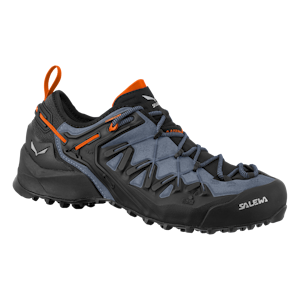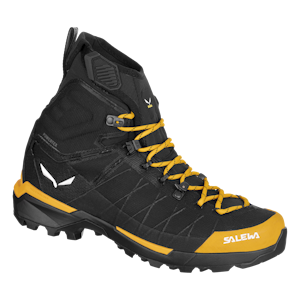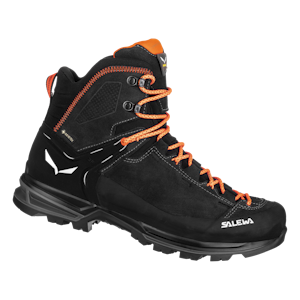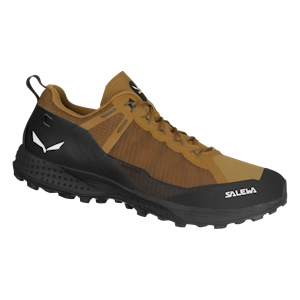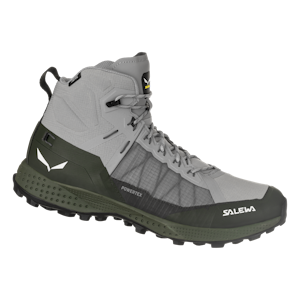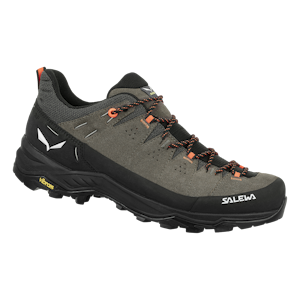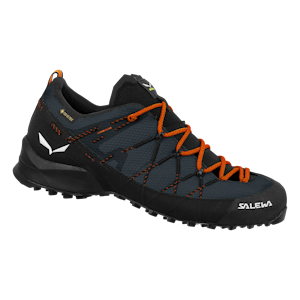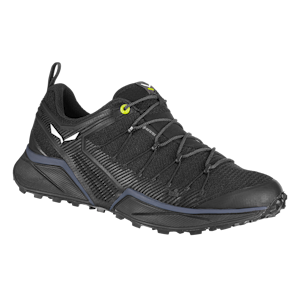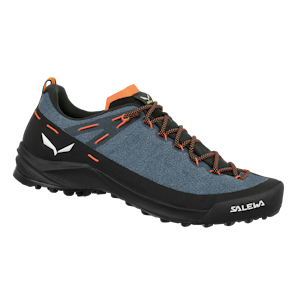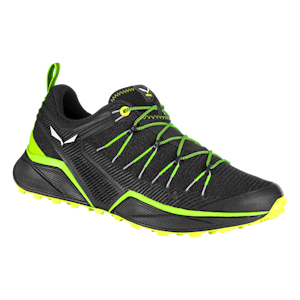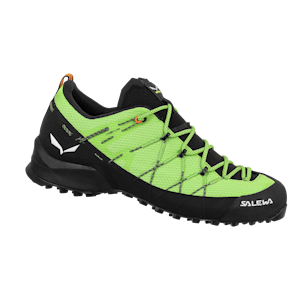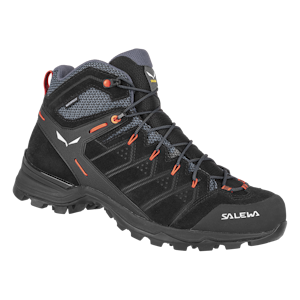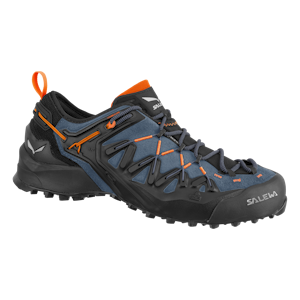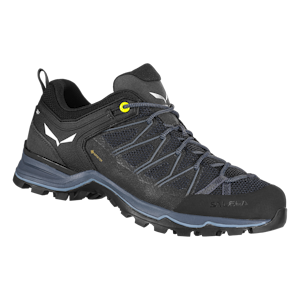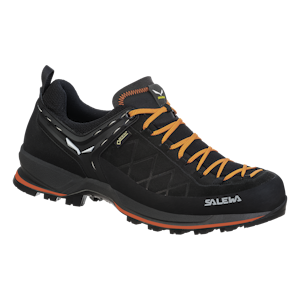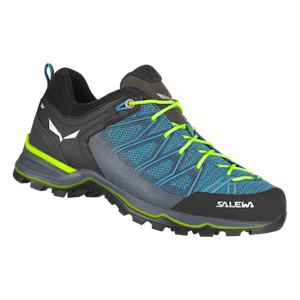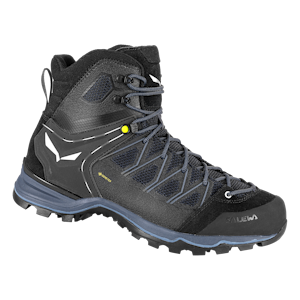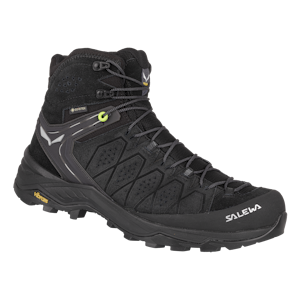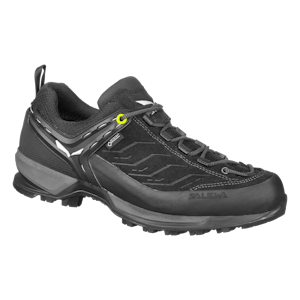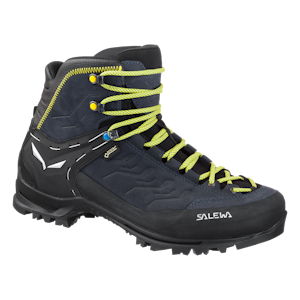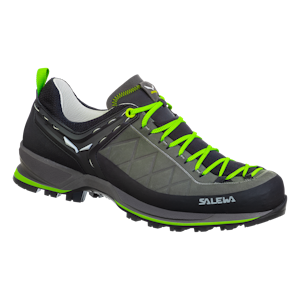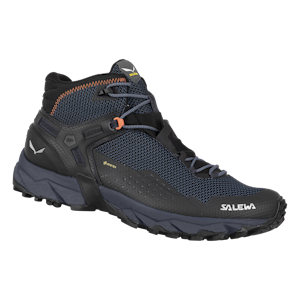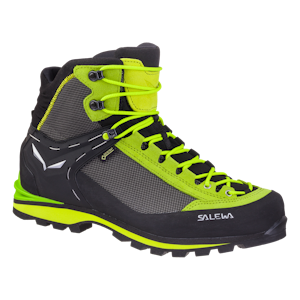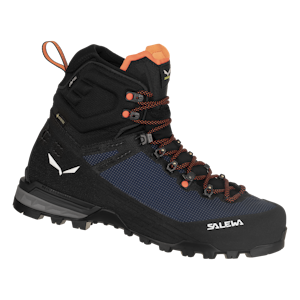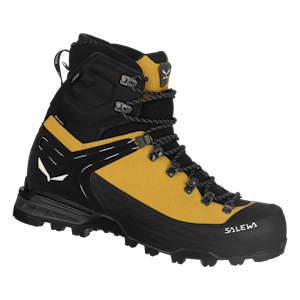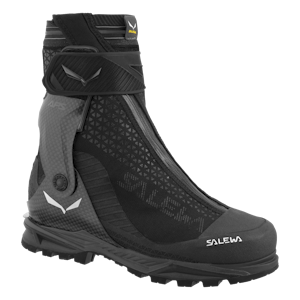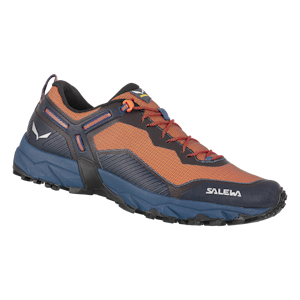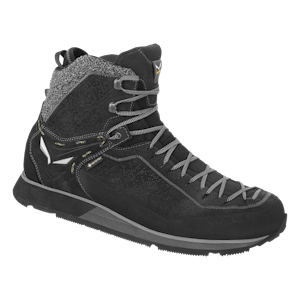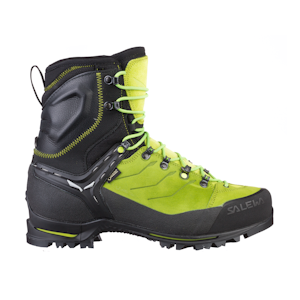Men's Outdoor Shoes and Mountain Boots
(36 Products)Whether you’re crossing a slippery creek or pushing your way up a dusty trail, Salewa's wide selection of Men's Outdoor Shoes & Boots will keep you on your path. Created with activity specific technical features such as breathable materials, performance insoles, and moisture management, our outdoor shoes and hiking boots will prepare you to face challenging terrains and extreme weather conditions. Whether you're mountaineering, speed hiking, trekking, or approach shoes, our outdoor footwear will ensure optimal performance. Low-cut hiking shoes designed with a lightweight, breathable mesh upper will keep cool on a low-altitude summer hike. Extreme winter temperatures are no match for our rigid, waterproof mountain boots equipped with a protective GORE-TEX membrane. All of our men's outdoor footwear and trail running shoes features anti-slip soles for outstanding traction, stability, and climbing precision. We recommend that you buy one size larger than normal, and try the shoes on with the socks you intend to wear on your hike.
Why outdoor footwear?
Whatever your activity, you need the right boots and shoes. Our outdoor footwear is specifically engineered to ensure the best mountain experience for mountaineering, trekking, hiking, speed hiking and approach use.
How to choose the right men’s outdoor footwear
There is such a wide range of options out there when choosing outdoor footwear. Here’s our guide to help you make the right decision.
First up, your decision primarily depends on the mountain activity and destination you have in mind. Are we talking snow-covered peaks or summer trails? Secondly, decide whether you are looking for boots or shoes. How much ankle support do you want? And how heavy is your pack?
Our speed hiking and approach shoes are obviously more agile and flexible and so better suited for faster-moving activity, when extra ankle support would slow you down.
Hiking boots come into their own in rough, uneven terrain and on descents and especially ascents, when greater ankle support and a more rigid upper can help prevent injury. If you are carrying a heavier pack, hiking boots are a better option.
Your choice of footwear should also take into account your overall level of experience and fitness, your pace speed and how long your tours are going to be.
Ultimately though, choose your outdoor footwear based on what you find most comfortable to wear.
What to look for when buying hiking boots and shoes
- Upper: We make our footwear using high-quality upper materials from suede leather to lightweight and breathable mesh fabrics. Leather shoes and walking boots tend to be more durable, but need slightly more looking after. Outdoor footwear with synthetic uppers tends to be lighter and more flexible straight out of the box.
- Midsole: The midsole is the part inside the shoe that provides impact protection and underfoot support. We use EVA for lightweight comfort and PU for greater durability. Flexibility is paramount here. Lightweight, flexible footwear is more comfortable for easier day hikes. Stiffer boots will give you more support for challenging terrain and carrying a heavier backpack. The reduced flex of many of our mountain boots also makes them suitable for via ferratas and makes them crampon compatible. So again, be clear about your mountain objectives.
- Sole: We equip our footwear with outsoles with specialist rubber compounds and lug patterns from leading sole technology experts VIBRAM® and POMOCA® to deliver the required grip, traction and precision for each specific mountain activity.
What does GTX mean?
We offer most of our outdoor boots and shoes with a GORE-TEX® membrane for waterproof protection and breathability. This makes them ideal for use in a wide range of mountain conditions. However, on very hot, dry summer days, walking shoes without a membrane make a better choice.
Should you buy boots and shoes a size bigger?
This also depends on what you want them for. Your toes should always have room.
- Winter
In winter, your mountain boots should have a more relaxed fit, so that you can still wear a thicker mountain sock. Having wiggle room for your toes will make your feet feel a lot warmer. - Summer
In summer, you might prefer to wear more snug fitting footwear, especially if you are doing a lot of scrambling, edging or climbing. Don’t forget though that feet swell over the course of the day, especially when it’s hot. This is why it’s better to try on new boots near the end of the day. If in doubt, or if your feet are between sizes, then go up a half size. Either way, your heels should still be seated securely inside your boots and shouldn’t slip.
Get a good pair of hiking socks and don’t forget to wear in your footwear first – before you head up a mountain.

 Free shipping on orders over $200 - No minimum for registered users
Free shipping on orders over $200 - No minimum for registered users

